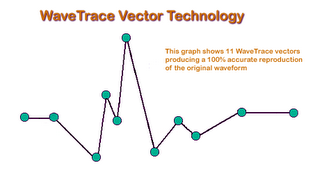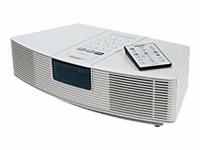Zone of Natural Expansion for "WAVE" Marks Brings Victory in "WAVETRACE" 2(d) Opposition
Opposer Bose Corporation nearly went under in its Section 2(d) opposition to registration of the mark WAVETRACE for "audio encoding and decoding circuit boards and software for converting audio content to and from digital audio files." However, the Board threw Bose a life preserver, dubiously finding a likelihood of confusion with Bose's registered marks WAVE, ACOUSTIC WAVE, and WAVE/PC for radios, audio tape players, compact disc players, loudspeaker systems, and sound systems coupling a radio to a computer. Bose Corp. v. ONG Corp., Opposition No. 91162058 (September 29, 2006).

Bose started with a belly-flop, pleading six registrations but failing to get them all into evidence: it attached photocopies of the registrations to its notice of opposition, but they were not status-and-title copies; its witness was asked to read the registration, number, mark, and goods from the registrations, but was not asked to testify regarding ownership or current status.
Fortunately for Bose, however, Applicant ONG Corp. stated in its brief that Bose "is the owner of the registered trademarks WAVE, ACOUTIC [sic-should be ACOUSTIC] WAVE, and WAVE/PC." The Board took that as an admission that four of the six pleaded registrations "exist and are owned by opposer." It noted its "predisposition" to be liberal regarding finding such admissions "where the plaintiff has not properly entered its pleaded registrations into the record."
As to priority of use, again Bose floundered about. Bose's witness was not asked directly when each of the pleaded marks was first used, nor did the exhibits introduced by testimony reveal those dates. Nonetheless, Applicant introduced Bose's interrogatory responses, which included dates of first use for the WAVE and ACOUSTIC WAVE marks. Bose's testimony and exhibits established "the history of opposer's business" and its development of various products sold under the WAVE marks. Those products were introduced well before Applicant's I-T-U filing date. Therefore, Bose established priority of use.

Turning to the issue of likelihood of confusion, the Board found the fame of Bose's WAVE and ACOUSTIC WAVE marks to be "critical in this case," noting that famous marks enjoy a "wide latitude" of protection. It concluded that WAVE is "most likely to be seen by consumers as the dominant element in applicant's mark, simply because it is the first word in the compound WAVETRACE."
As to the goods, the Board veered off into troubled waters. It recognized that Opposer's and Applicant's goods are not competitive, but Bose's witness testified that "[t]here is a decoding circuit board inside the Wave Music System." Also, "the Wave/PC software has basically a MPE encoder." Although the Board noted that "there is nothing in the record to indicate that opposer markets these components to makers of finished audio products," it leaped to the conclusion that the goods are related:
"Because opposer utilizes in its finished products elements that are similar in function to the product of applicant, it would be within opposer's zone of natural expansion to consider marketing such elements to other producers of finished products."
Therefore the Board sustained the opposition.
TTABlog comment: Well, we have another candidate for the 10 Worst list. The Board's "zone of natural expansion" conclusion appears to be wholly without any factual support. Where's the proof that any makers of consumer audio products also sell encoder boards under the same mark?
Moreover, in the case cited by the Board to support its zone of expansion argument, Mason Engineering & Designing Corp. v. Mateson Chemical Corp., 225 USPQ 956, 962 (TTAB 1985), the Board ruled that Applicant Mateson had failed to establish a natural zone of expansion. The Board stated that, among the factors to be considered on that issue are whether the channels of trade and classes of customers for the two areas of business are the same, and whether other companies have expanded from one area to the other. Here, the channels of trade and classes of customers appear to be quite different, and there was no proof that other companies have expanded from one area to the other. Thus it would seem that here, as in Mason, the evidence "falls far short of the type of evidentiary showing which would be necessary ... under the doctrine of natural expansion."
Obviously, the Board wanted to give a wide scope of protection to the famous WAVE mark. But didn't the Board go overboard here?
Text Copyright John L. Welch 2006.




0 Comments:
Post a Comment
<< Home